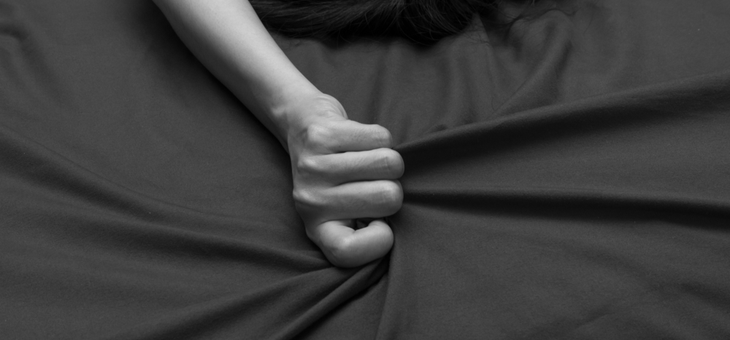For many people, it takes a little longer to get in the mood, and that’s okay.
People can be quick to throw around the term ‘libido issues’ when, in fact, they simply have a different relationship to sex compared with others. Women, in particular, can worry about a low sex drive, but their mood may be more about what’s happening in day-to-day life.
Read more: Surprising things that might be affecting your sex drive
There are two types of sexual desire: spontaneous desire and responsive desire. Spontaneous is exactly what it sounds like, you could be watching a movie or washing the dishes and suddenly feel a strong desire for sex. Responsive desire is the feeling of being turned on when you are in a sexual situation.
Sometimes, those with responsive desire feel as though they have a low libido, especially if their partner is the one to initiate sex more often. But responsive desire often just needs a specific context to be ignited.
Sex researcher Emily Nagoski describes sexual context as one of the most important elements of female sexual desire. She writes: “Context is made of two things: the circumstances of the present moment – who you’re with, where you are, whether the situation is novel or familiar, risky or safe, etc, and your brain state in the present moment – whether you’re relaxed or stressed, trusting or not, loving or not, right now, in the moment.”
Humans have a dual-control model of sexual response, which essentially consists of an accelerator and a brake. When we are getting in the mood, our accelerator is pressed and things are running smoothly, if your ‘brakes’ are dominant you may struggle with getting turned on.
How do we balance them? Context.
Finding out what turns you on is about creating the best context for pleasure for your individual needs.
Read more: Four sex-drive supplements for women
Research by Katie McCall and Cindy Meston identified four categories of sexual cues that are key to women’s sexual desire.
Love/emotional bonding cues
Feeling emotionally connected to your partner can really get some people in the mood for sex. Having that close bond with someone can be the perfect backdrop to sexual pleasure.
Ms Nagoski offered this example in her book: “A woman told me the extraordinarily romantic story of a boyfriend who flew halfway around the globe to surprise her for their second anniversary of dating. Talk about closeness, commitment and special attention. Yeah, that man got laid.”
Some examples of this type of cue are:
- relationship security
- a supportive partner
- a committed partner
- having long-term plans with a partner
- feeling loved and special
- your partner making special gestures to show their love.
Explicit or erotic cues
Seeing or hearing something sexual happening in a show or movie, or even reading a sex scene, can get you instantly in the mood. These cues may also be something your partner does, like giving you a back rub before bed.
Some examples:
- watching or reading a sex scene
- thinking about sex
- talking about sex
- realising your partner is turned on
- asking for or anticipating sexual activity
- your partner sharing a sexual fantasy
- having a sexual fantasy.
Visual/proximity cues
Being close to someone you’re attracted to can set off your internal desire. Certain behaviours or body types may just get you in the mood too. Maybe you love watching your partner work on the car or use tools to fix something.
Some other examples:
- seeing someone who is well dressed
- being around someone powerful or famous
- watching someone engage in physical activity
- seeing someone act confidently
- seeing/talking with someone intelligent
- flirting with someone.
Read more: Therapist tells how to keep your sex life on track as you age
Romantic/implicit cues
That sense of security and safety you have with a partner can be so damn sexy, but sometimes it’s nice to go that extra step. Enjoying a nice dinner together or going out for a romantic evening can kickstart the sex drive.
A great way to feel loved and wanted (and make your partner feel the same) is to find out each other’s love language so you can both do things you know the other will appreciate.
Some other examples:
- having your partner whisper in your ear
- dancing closely
- watching a sunset
- watching a romantic movie
- having a bath or shower together
- touching your partner’s hair or face
- giving or receiving a massage
- laughing with your partner.
Some of these cues won’t do anything for you and others may have you rushing for the bedroom. It’s helpful to identify the cues that make you feel good and in the mood, so it’s easier to kickstart your desire whenever you want.
Do you know your love language? What cues make you feel the most loved?
– With PA
If you enjoy our content, don’t keep it to yourself. Share our free eNews with your friends and encourage them to sign up.

